7 Tips for Emotions to Raise and Harvest Meat
Raising and harvesting your own meat and dealing with emotions can be tricky. Especially for homesteaders with kids. But I’m giving you seven tips to help you along on your journey so that you don’t have a breakdown whenever it’s time to harvest them for food.
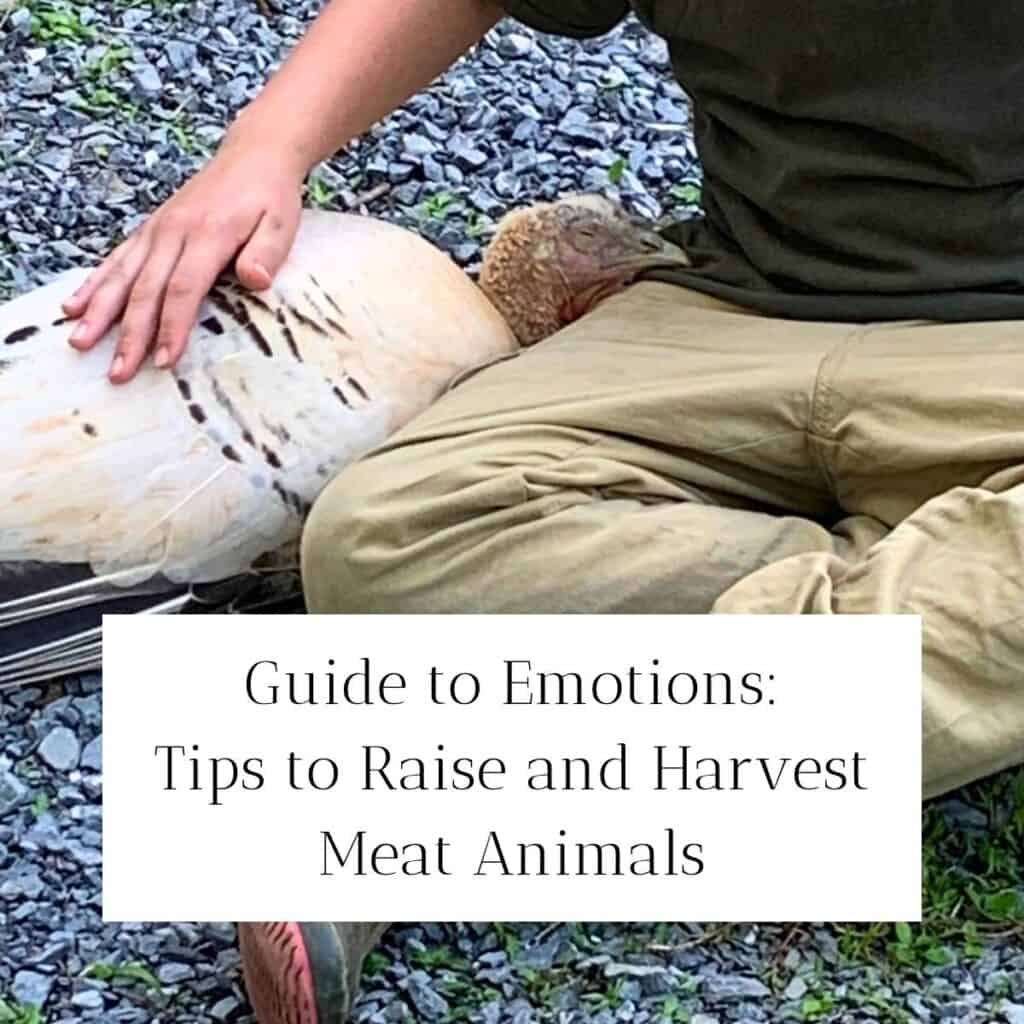
This post may contain affiliate links. As an Amazon Associate I earn from qualifying purchases. That means I make a small commission at no cost to you if you place a qualifying purchase through any of the links. Read my full disclosure here. Thanks for your support!
Raising and Harvesting Meat: Homestead Ethos
Ethos is the moral nature, character, and guiding beliefs of a person or group of people.
First, let me start by saying that we raise and harvest our meat animals using moral, humane, and ethical practices, as do the vast majority of farmers, ranchers, and other homesteaders.
If you’ve read some of my other blog posts, you know that our chickens and turkeys are 100% free all of the time when they are big enough to take care of themselves. Read how we raise chickens for cheap and how we raise livestock for cheap for more details.
We take pride in giving our animals a life that they love. And we work hard to protect them the best that we can.
But it’s important to remember WHY we have livestock and poultry on our farm. And ultimately that reason is because we eat meat.
So while we work hard to care for our livestock and poultry while they are living, we also have them so that we can provide meat for our family. I think those two goals are symbiotic and that all meat animals should be raised in this manner.
Now that we’ve cleared that up, let’s get into exactly how we raise our livestock and poultry when our end goal is to harvest them and eat them.
How do you decrease getting emotionally attached to meat animals?
To decrease or avoid getting emotionally attached to livestock and poultry that you raise for meat consumption, follow the below tips that we use.
- Either don’t name meat animals you plan on harvesting, or give them a food name.
- Allow yourself to emotionally bond with the breeding stock but not the offspring.
- Use delicate terminology such as “harvest” vs “kill” when referring to meat animals.
- Accept that some meat animals may become pets that you won’t harvest.
- Have a neighbor, friend, or family member raise the meat animals for you.
- Understand that you’re raising your meat more humanely than a factory farm.
- Don’t forget that seasonal hunting is always an option for meat.
Keep in mind that what works for us and our family may not work for you or your family.
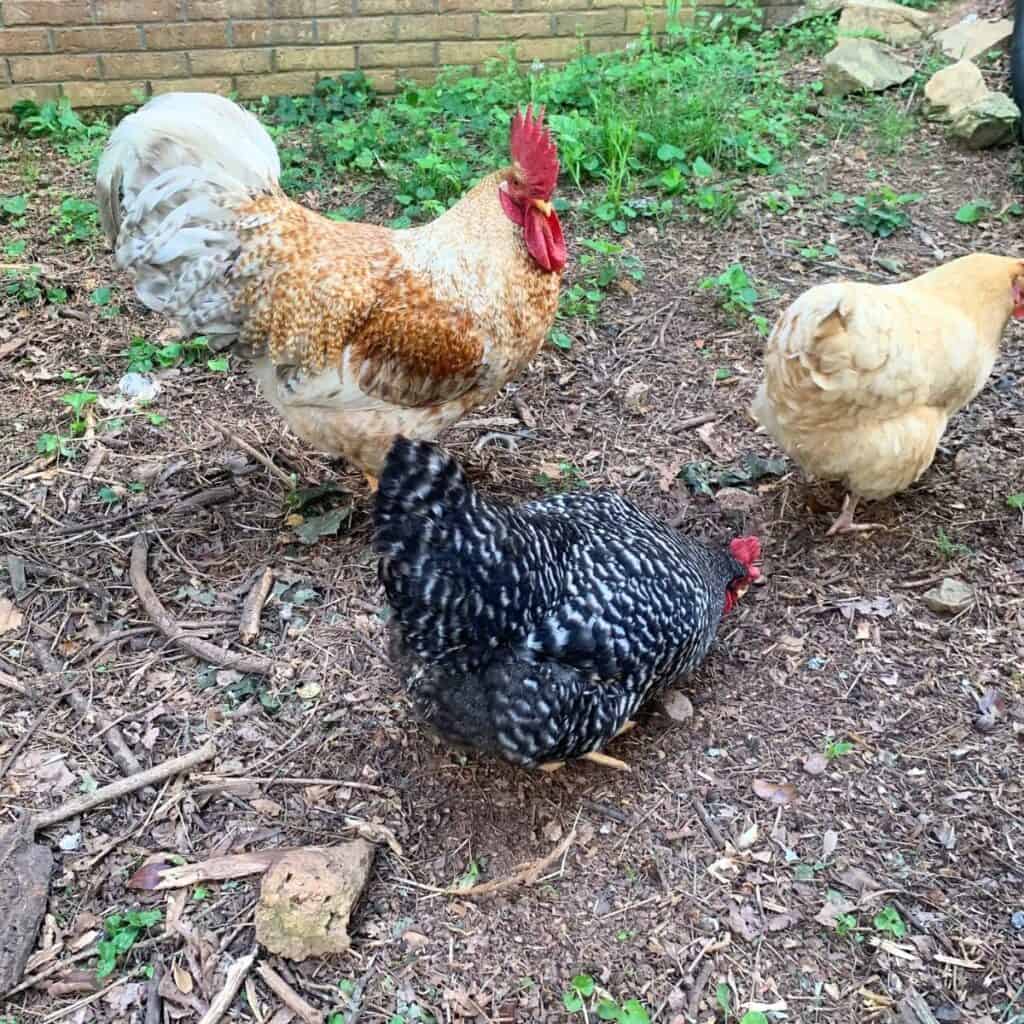
1. Either don’t name meat animals you plan on harvesting, or give them a food name.
The first tip for dealing with your emotions when raising and harvesting meat animals is to either not name the animals, or give them a food name.
Beef cattle take a long time to reach maturity and harvest size. And if you have a small farm, it’s not always possible to avoid naming them. Especially when you have children on the farm.
We can keep a heifer (female calf) on the farm to become a future breeder, but we don’t really want or need multiple bulls or steers (a castrated bull calf).
When our dairy cow Belle had her first calf and we learned that he was male, my sweet husband and I were quick to offer name suggestions to the kids that were related to food.
We gave the kids a list of names for them to pick from. The name choices were T-bone, Hamburger, Ribeye, and Chuck. The kids named him Hamburger.
Other food name options for cattle could be Angus, Porterhouse, Sir Loin, and Tomahawk.
Psychologically, it’s helpful for the kids to choose a food-themed name so that there’s no surprises when it’s time to harvest the animal.
When it comes to our chickens and turkeys, we only name our pets and some of our breeding stock. The others don’t have names. This is one way to distance ourselves from them emotionally.

2. Allow yourself to emotionally bond with the breeding stock but not the offspring.
The second tip for dealing with your emotions when raising and harvesting meat animals is to allow yourself to bond with the breeding stock but not the offspring.
When you’re breeding your own meat animals, you’ll keep your best moms and dad(s) to reproduce so that you can have strong and healthy offspring. And while falling in love with babies is easily done, try to reserve your affection for the parent stock.
You may find it easier to harvest the offspring once they reach harvest size when you know that you’ll still have the parents around.
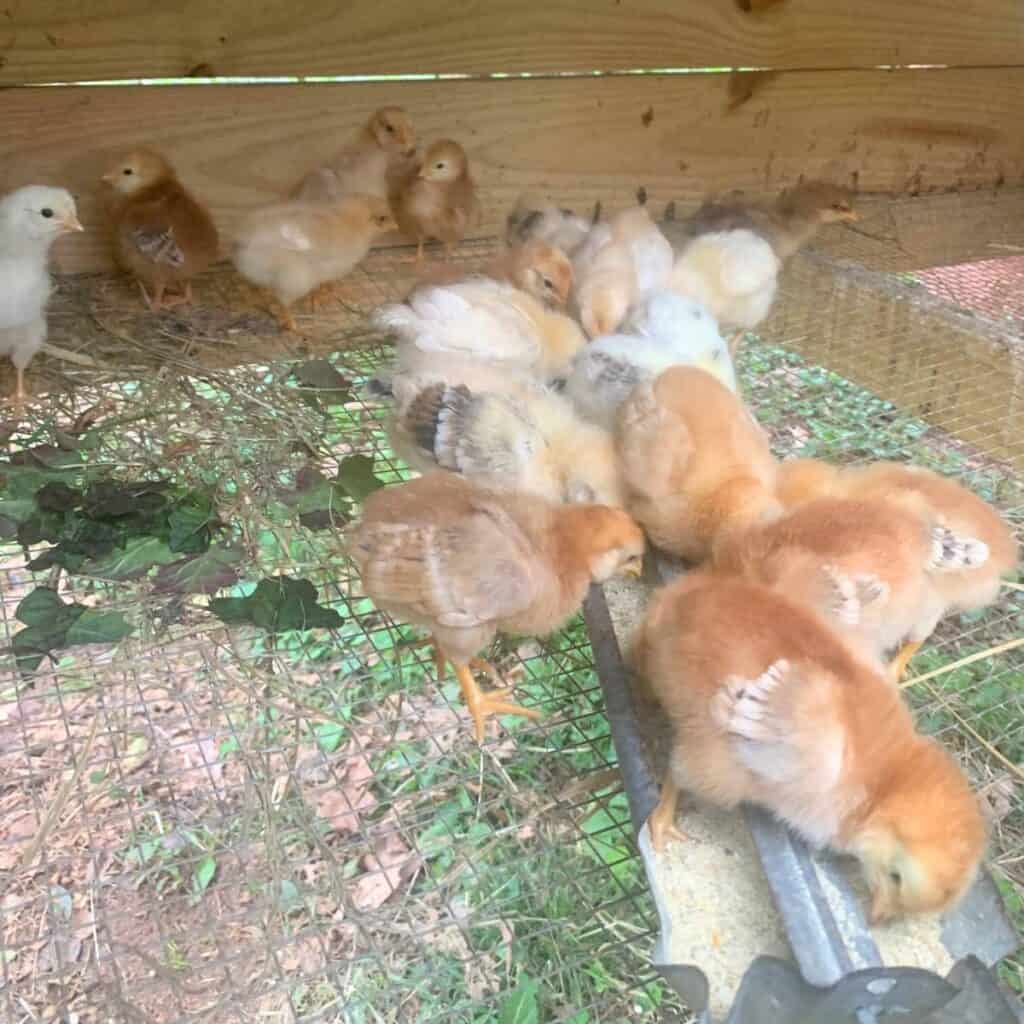
3. Use delicate terminology such as “harvest” vs “kill” when referring to meat animals.
The third tip for dealing with your emotions when harvesting meat animals is to use softer and more delicate terminology such as “harvest” versus “kill.”
This is another psychology trick. You use the term “harvest” when you pull carrots and leeks out of the ground even though doing so “kills” the plant. And you store the food in your pantry or cellar.
Why not use the same terms when referring to your meat animals? Suddenly, I no longer have two “kill cones” for harvesting our chickens and turkeys. I now have “harvest cones” if someone asks me what they are. It doesn’t negate their purpose, but it’s a more delicate name for them.
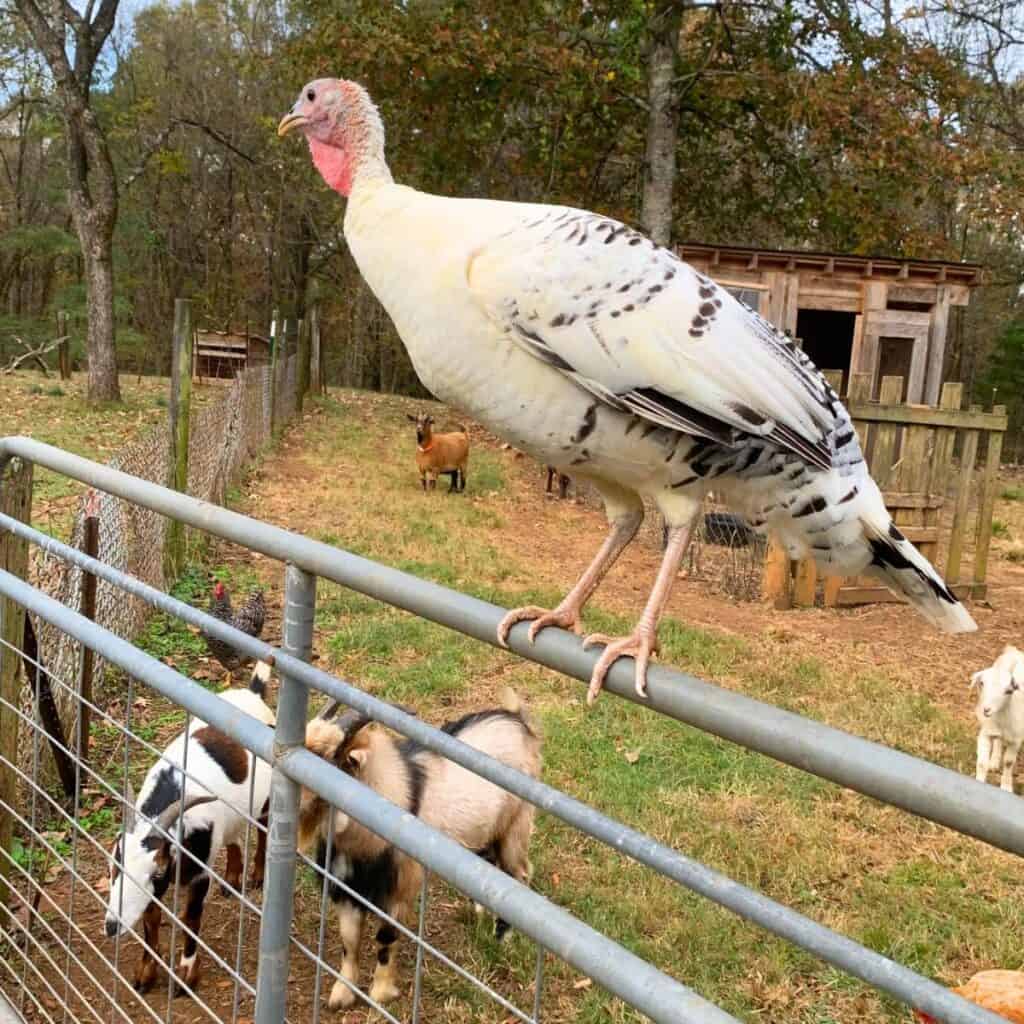
4. Accept that some meat animals may become pets that you won’t harvest.
The fourth tip for dealing with your emotions when raising and harvesting meat animals is to accept that some of the meat animals may become pets that you won’t harvest.
It’s not a hard and fast rule that every meat animal, whether livestock or poultry, should be harvested.
Every situation and every family will be different. But I like to give ourselves grace and allow the freedom to change our minds with some animals. Therefore, some of the meat animals we raise may get designated as pets that we won’t harvest.
When we first moved to our farm at the end of 2020, the first animals we bought were laying chickens. We sold some when they reached adulthood, and others died from predators before we figured out a good strategy. But we kept our favorite hen.
She’s older than any of the other chickens, and she has had a name since she was a baby chick. We always knew that she was a pet and would never end up on our dinner table.
Don’t be hard on yourself if you end up designating some of your meat animals as pets. But don’t let every animal become a pet.
This may be easy or hard for you depending on your personality. But be intentional about the animals that you raise.
For us, sometimes we know right off the bat that some animals will be pets. For example, our first chicken(s), dairy cow, or turkey(s) were solid in the “pet” category when we got them.
The freedom to love some of the animals is important for our hearts. It may not even be possible to NOT love at least some of them.
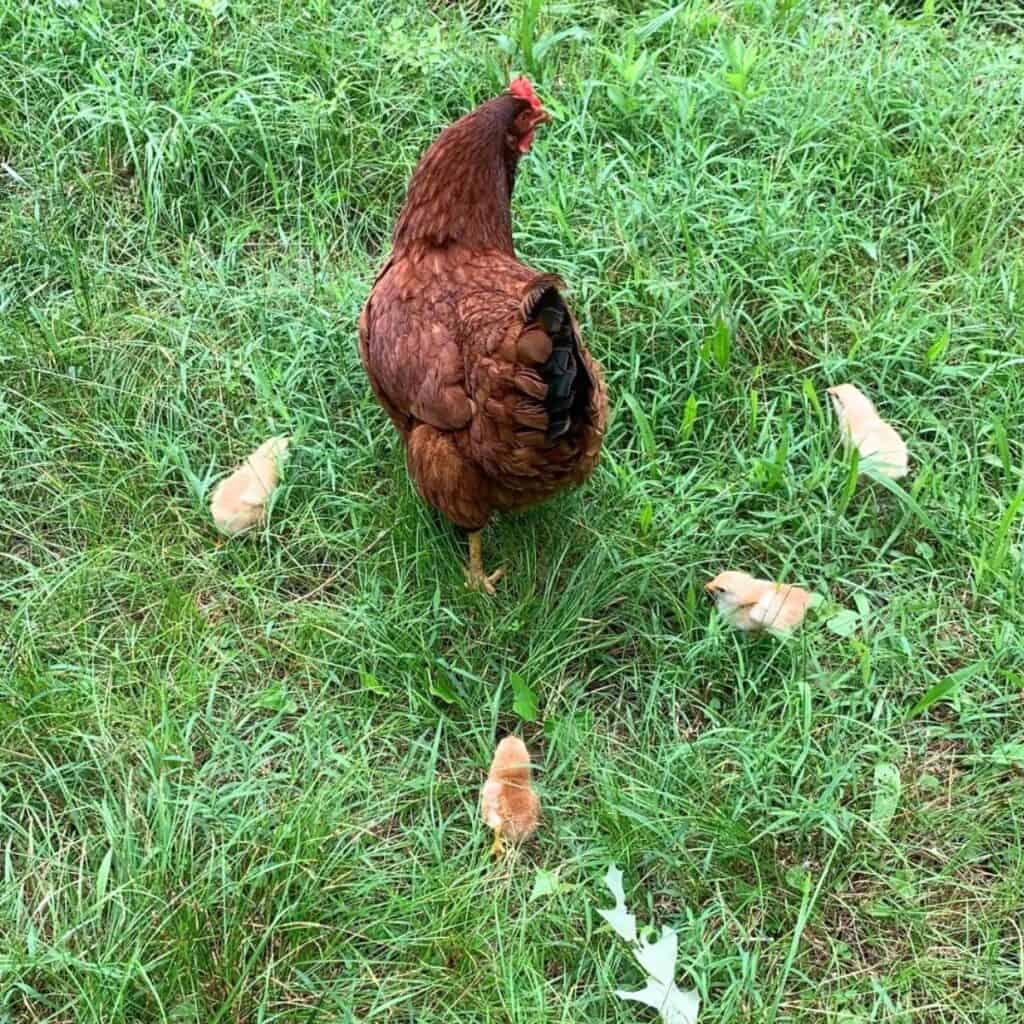
5. Have a neighbor, friend, or family member raise the meat animals for you.
The fifth tip for dealing with your emotions when raising and harvesting meat animals is to outsource the raising and/or harvesting to a neighbor, friend, or family member.
This is a big ask, I’m not going to lie. But if your sensitive heart or the hearts of your children can’t face seeing a meat animal every day and then taking it to a butcher or harvesting it at home, maybe a kind neighbor or family member could do the heavy lifting for you for a cut of the meat.
You may not be able to find a local farmer who can sell you the type of meat you want to buy. Maybe you want organic, grass-fed and grass-finished beef that hasn’t been vaccinated, and maybe none of the local farmers raise their beef this way. If you can’t purchase your meat from online retailers, it leaves you to do the job yourself.
If you need a little more degree of separation between you or your family and your meat animal(s), see if a neighbor, friend, or family member would be willing to raise and/or harvest the meat animal(s) for you.
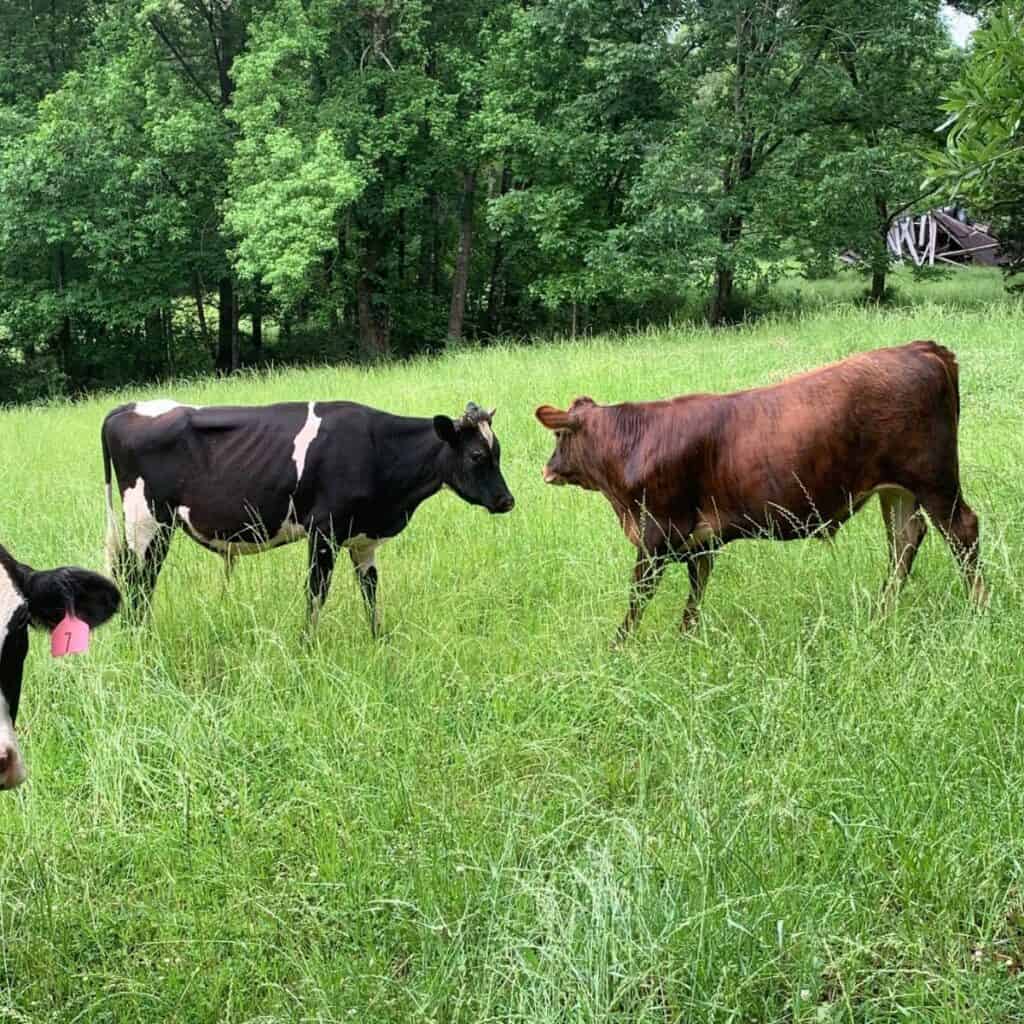
6. Understand that you’re raising your meat more humanely than a factory farm.
The sixth tip for dealing with your emotions when raising and harvesting meat animals is to realize that you are raising your meat animals in a more humane way than a factory farm.
We all have two choices for obtaining our meat. (Unless you convert to being a vegetarian and give up meat.)
We can either buy our meat from someone else that raises and harvests it for us, or we can do it ourselves.
Big corporations are not known for their humane treatment of meat animals. If they’re not outright cruel, the living standards are still far less than desirable by the meat animal.
Factory farms pack animals tightly together in concentrated animal feeding operations (CAFOs). Most consumers wouldn’t want to support those businesses when they abuse animals, workers, rural communities, and the environment.
When you raise and harvest your own meat animals, you can be as humane as possible. Without sounding preachy, I recommend respecting life and having a healthy appreciation for where your food comes from.
If you want to learn how much beef you’ll get from a cow, check out this blog post!
When it comes time to harvest a meat animal, it’s a little easier to harvest the animal when I know that it had a terrific life.
Additionally, the way we harvest our chickens and turkeys is quick and minimally painful. After severing the carotid artery and jugular vein, the animal loses consciousness within just a few seconds and then it’s a short wait until it’s dead.
We don’t have the setup to harvest cows or pigs here on the farm, but the butcher we use also uses humane means to harvest them.
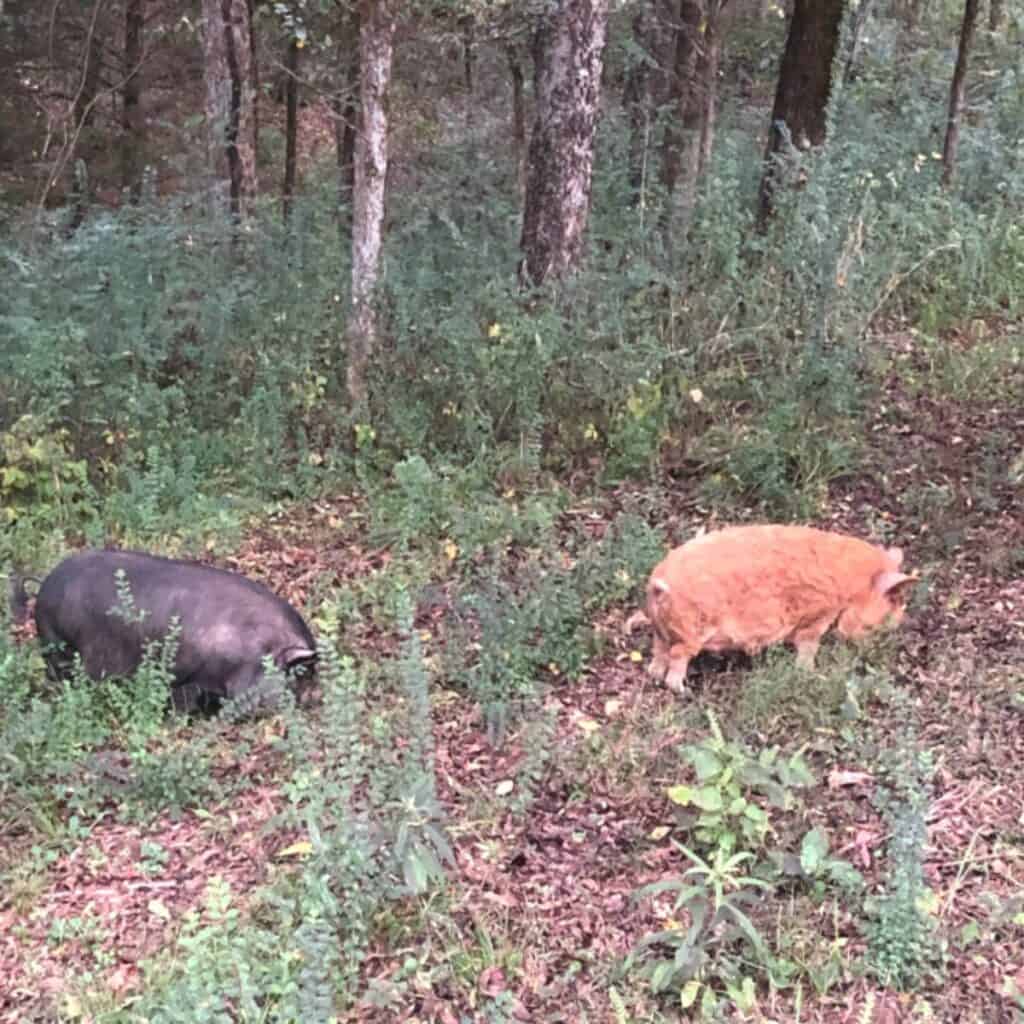
7. Don’t forget that seasonal hunting is an option for meat.
The seventh tip for dealing with your emotions when raising and harvesting meat animals is that seasonal hunting is an option for you to fill your freezer.
We love to eat venison at our house. Venison is as natural and organic as it gets since the deer are free to roam and eat what they naturally eat in their lifetime.
If you want to ease into raising and harvesting meat animals, a good half-step is to hunt and then harvest an animal that you haven’t raised. If you can make it through hunting and processing a deer, you can probably make it through raising and processing your own meat animals.
There is some talk about deer, elk, and moose possibly carrying Chronic Wasting Disease (CWD) in some countries including the USA. However, the American Chemical Society recently announced that none of the tested CWD strands had ever been shown to be zoonotic (passing from animal to human).
CWD is a chronic disease that damages the brain and body. It causes behavior changes and eventually death in animals carrying the disease.

Teaching Children About Raising and Harvesting Meat Animals
If you have children on your homestead, it is best to offer an age-appropriate explanation to them in advance. It’s best to be honest and open about raising and harvesting meat animals. What you tell them (or don’t tell them) and the reasons you give will ultimately be up to you.
We don’t let our youngest children participate when we harvest chickens and turkeys at home. However, they are fully aware of what’s going on and they know where our food comes from.
Our only child that participates in harvesting meat birds is our older son. He shovels discarded feathers from our feather plucker. He watches the adults, though, and will be a great helper when he’s a little bit older.
The kids are told early on which animals are pets and which animals will probably be food. It’s a gentle way to prepare them and they accept it.
Next Steps
If you’re ready to take the next steps to start raising your own beef, do your homework by checking out these blog posts:
How Much Beef Will You Get From a Cow: Breakdown
How Many Steaks Are In A Beef Cow? (Our Numbers!)
Other Related Posts
How to Raise Chickens for Cheap
The Secret to Raising Livestock for Cheap
Pin It For Later!
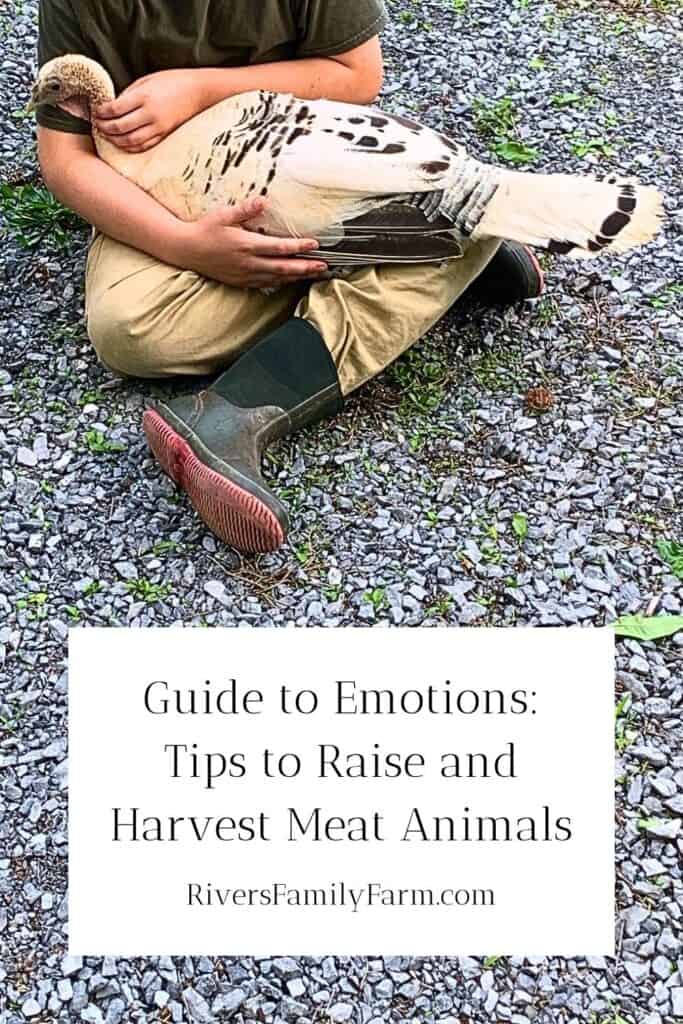

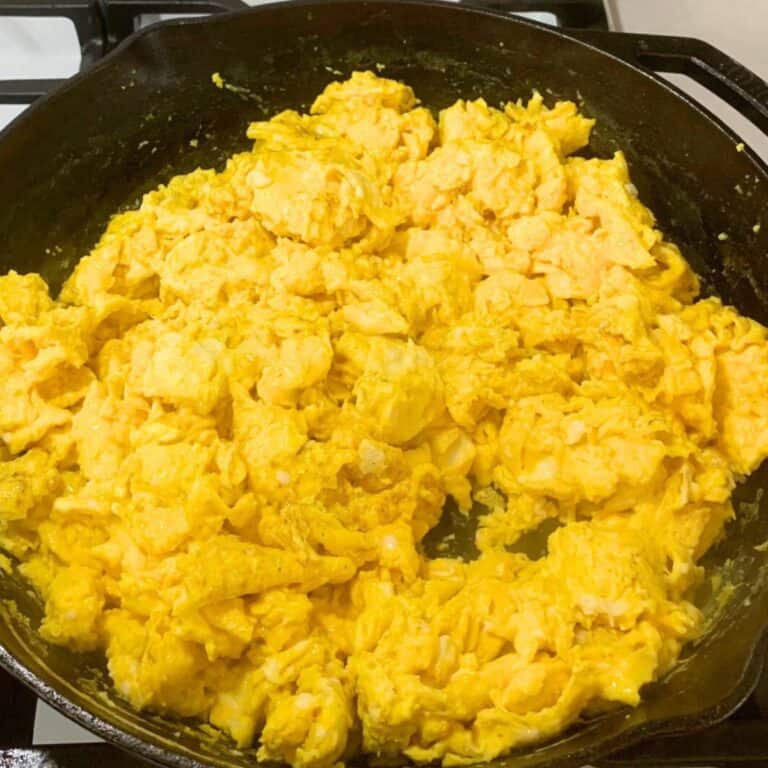
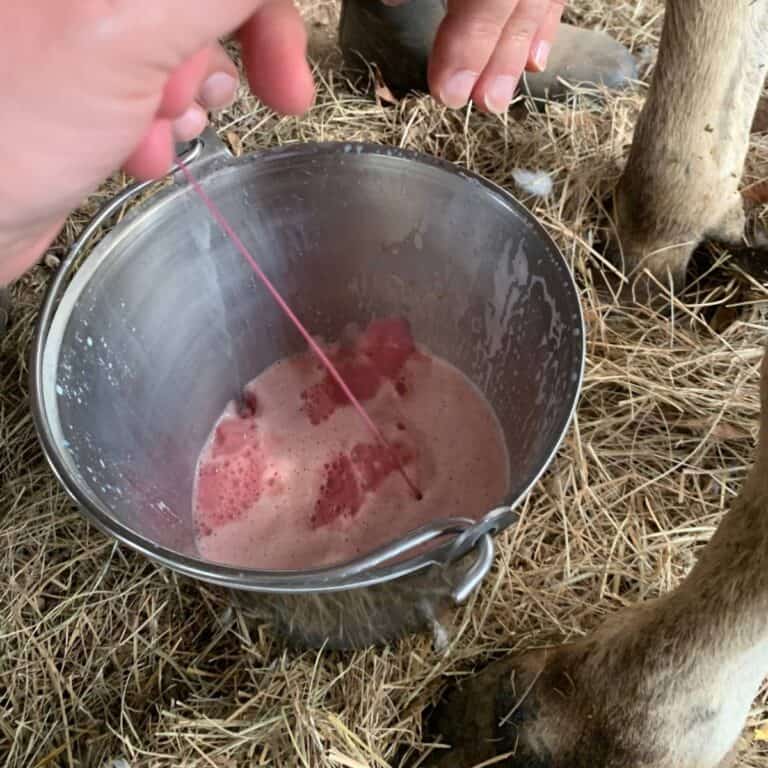

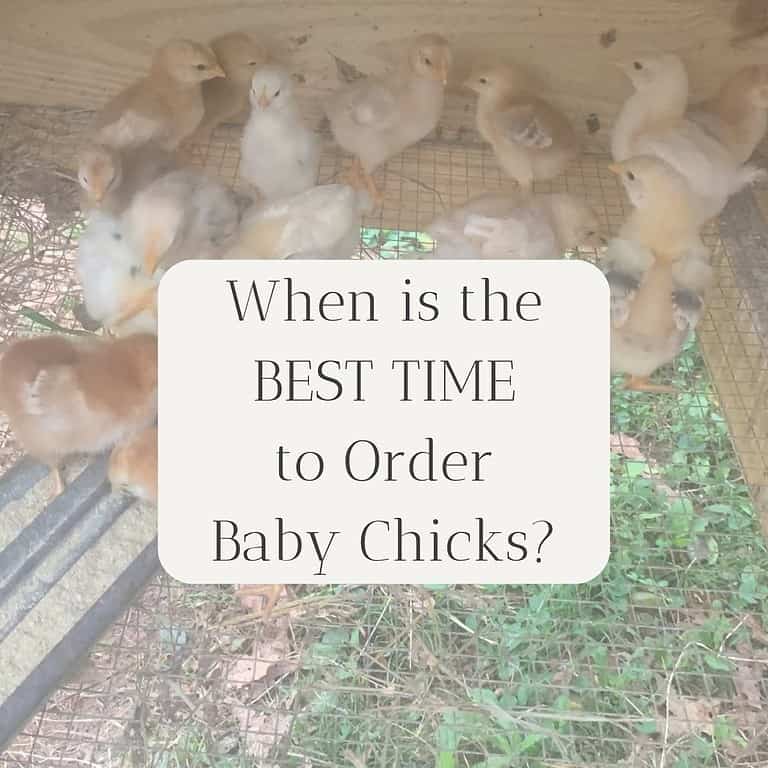
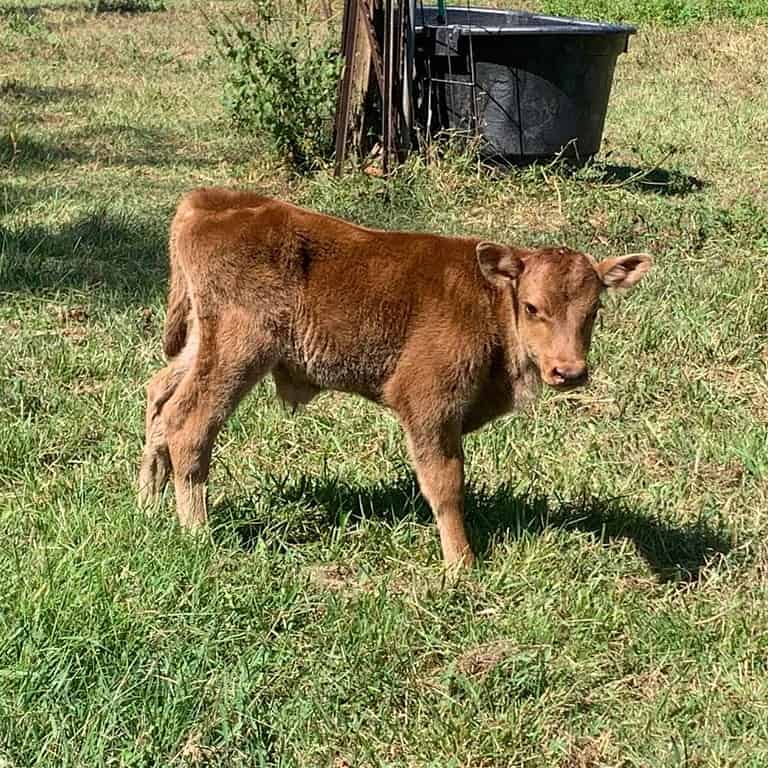
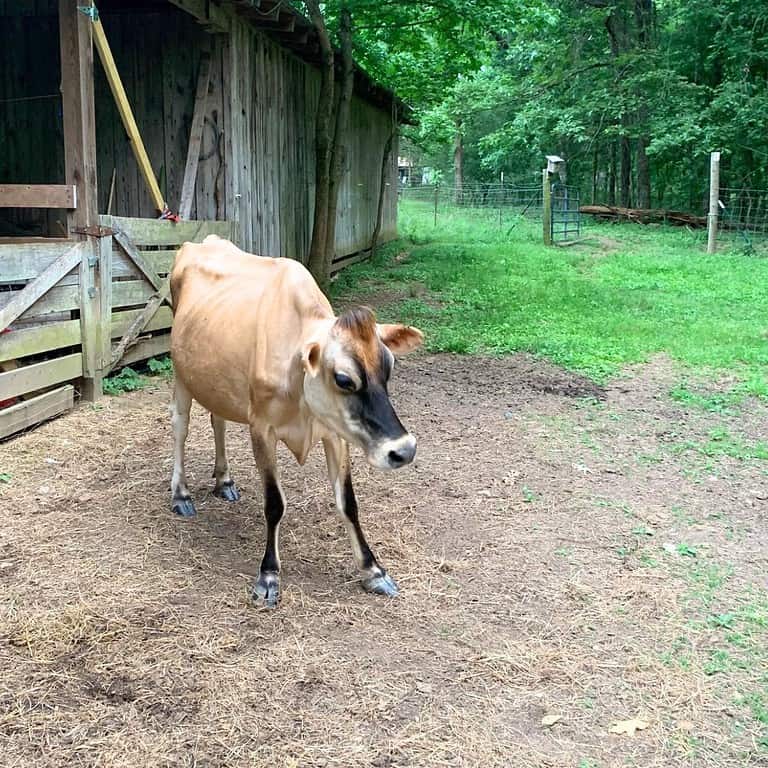
This is something we’ve put a lot of thought into here on our homestead. It was great to hear your views on it. I love the reminder of the meaning of the word “ethos”. Something we could all focus more on in our lives. Thanks for sharing!
You’re very welcome!
This is such a great article. It’s clear you are thoughtful about the most ethical way to raise meat.
I’m glad you enjoyed it! Yes, we try to be.
Such great tips and so true! Thanks for sharing this is so handy!
You are most welcome!
Great tips! We did a lot of them but the rule in our house was it had to have a food name if it was for meat and the girls in my family did a lot of the raising and the boys did the butchering. ( my parents were using our natural god given talents) so as a child I understood what had to happen and am going to teach these tips to my kids. And I hope they will be emotionally resilient and able to feed there family’s if they have to.
I love this! It’s such a great experience/skill on so many levels. (Respect for life, not wasting food, self-sufficiency, etc.)
This is such a great article & very informative! This will come in handy when we are ready to raise chickens!
Thanks! Yes, using these tips when you’re ready to raise and harvest your own meat will help you with the emotions part of it.